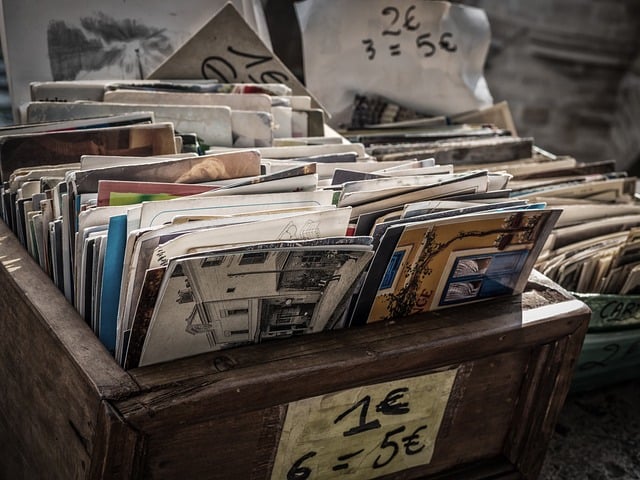In today's globalized art market, understanding regional preferences within the UK is vital for art catalog and exhibition brochure translation services. Professional translators must balance linguistic accuracy with cultural sensitivity to cater to diverse audiences across England, Scotland, Wales, and Northern Ireland. This involves adapting content, design, and visual elements to local idioms, slang, accents, and aesthetic standards, ensuring effective communication and engagement. Quality assurance processes ensure accurate, contextually appropriate translations that capture the essence of artistic expressions while appealing to specific regional tastes. By leveraging these tailored translation services, art institutions can expand their reach, enhance visitor experiences, and foster a deeper appreciation for UK art in its diverse contexts.
In today’s global art market, reaching diverse audiences across regions is essential. Tailoring translations for the UK market demands a deep understanding of regional preferences and cultural nuances. This article explores strategies for successful translation services, focusing on UK art catalogs and exhibition brochures. We delve into language subtleties, local audience engagement, and consistent brand image building. By navigating these aspects, art organizations can enhance their reach and deliver impactful experiences to diverse UK audiences.
- Understanding Regional Preferences in the UK Market
- The Role of Language and Cultural Nuances
- UK Art Catalogs: A Gateway to Local Audiences
- Exhibition Brochures – Enhancing Visitor Engagement
- Tailoring Content for Different Regions
- Language Expertise: Finding the Right Translators
- Localizing Design and Visual Elements
- Testing and Quality Assurance Procedures
- Building a Consistent Brand Image Across Regions
- Case Studies: Successful Regional Translation Projects
Understanding Regional Preferences in the UK Market

Understanding regional preferences in the UK market is a nuanced task, especially for businesses aiming to cater to diverse audiences across England, Scotland, Wales, and Northern Ireland. The UK’s cultural mosaic means that what resonates in London might not have the same impact in Manchester or Edinburgh. When it comes to translation services for art catalogs and exhibition brochures, this regional diversity becomes even more significant.
For example, a translation of an exhibition brochure designed for a contemporary art gallery in London should reflect the city’s vibrant cultural scene and use language that appeals to a cosmopolitan audience. In contrast, translating the same brochure for a smaller, rural gallery in the Scottish Highlands might require a different approach, focusing on accessibility and a more intimate tone to connect with a local community. UK art catalog and exhibition brochure translation services must, therefore, be tailored to not only linguistic accuracy but also cultural sensitivity and regional understanding.
The Role of Language and Cultural Nuances

Language plays a pivotal role in how information is conveyed, understood, and appreciated, especially when it comes to UK art catalogs and exhibition brochures. Each region has its unique linguistic nuances, idioms, and slang that can significantly impact the effectiveness of a translation. For instance, a phrase that sounds poetic in one language might not translate well into another, losing its intended cultural subtlety. Similarly, local references, puns, or cultural jargons specific to an art scene may not find their equivalent in another, potentially leading to misinterpretation or confusion.
Cultural nuances are equally important. Art is a universal language, but even within the realm of visual expression, interpretations vary across cultures. What is considered aesthetically pleasing or symbolically significant in one country might differ greatly in another. Therefore, when translating UK art catalog and brochure content for international audiences, it’s not enough to simply replace words; the translator must understand and respect these cultural differences. This involves delving into the context, history, and unique artistic traditions of each region to ensure that the translated materials resonate with local audiences as intended.
UK Art Catalogs: A Gateway to Local Audiences

UK art catalogs and exhibition brochures play a pivotal role in connecting artistic visions with local audiences. In a country as diverse as the UK, where different regions boast unique cultural preferences and linguistic nuances, translating these materials accurately is essential for effective engagement. Professional translation services specializing in UK Art Catalogs ensure that artistic expressions are conveyed seamlessly across languages, preserving the essence and intent behind each piece.
By offering tailored translation solutions, these services cater to the specific demands of various regions within the UK. Whether it’s adapting language for Scottish accents, embracing Irish cultural subtleties, or refining terminology for the London art scene, accurate translations facilitate a deeper connection between artists, galleries, and their respective audiences. This level of localization not only enhances accessibility but also fosters a greater appreciation and understanding of art in its diverse contexts across the UK.
Exhibition Brochures – Enhancing Visitor Engagement

Exhibition brochures are a vital tool for art galleries, museums, and cultural institutions to engage visitors and convey the essence of their exhibitions. In a competitive market, where tourists and locals alike have numerous options for cultural experiences, ensuring your exhibition catalogs and brochures are both informative and appealing is crucial. This is where professional translation services come into play, especially when catering to a diverse UK audience with varying linguistic backgrounds.
By utilising UK Art Catalogs and Exhibition Brochures Translation Services, institutions can enhance the visitor experience by providing materials in multiple languages. This simple yet effective strategy allows for broader accessibility, encouraging a more inclusive environment. For example, translating brochures into popular languages like French, German, or Spanish will not only cater to international visitors but also show respect for local communities with different linguistic needs and preferences.
Tailoring Content for Different Regions

When offering translation services for UK art catalogs and exhibition brochures, it’s crucial to tailor content to regional preferences. Different regions have distinct cultural nuances and language variations that can significantly impact how information is received and interpreted. For example, terms related to art styles or historical references might carry different connotations across the UK’s diverse areas. A skilled translator not only renders words from one language to another but also ensures the translated material resonates with the target audience.
This involves understanding local customs, artistic trends, and even subtle regional dialects. By customizing translations for specific regions, art catalog and exhibition brochure providers can enhance accessibility and engagement among diverse UK audiences. This level of localization ensures that the intended message—be it describing a particular artwork or announcing an upcoming exhibit—is communicated effectively, fostering deeper connections with readers and enriching their cultural experiences.
Language Expertise: Finding the Right Translators

When it comes to translating UK art catalogs and exhibition brochures, accuracy is paramount. These documents require not just linguistic proficiency but also a deep understanding of artistic terminology and cultural nuances. It’s crucial to engage professional translators who specialize in your field to ensure that the translation accurately conveys the essence of the artwork and maintains the intended tone and style.
Choosing the right translators for UK art catalog and exhibition brochure translations can significantly enhance readability and engagement among diverse audiences. Look for linguists with native-level proficiency in both the source and target languages, as well as experience in translating similar content. This combination guarantees not just precise word-for-word translation but also cultural adaptation to resonate with readers across different regions.
Localizing Design and Visual Elements

When translating UK art catalogs and exhibition brochures, it’s crucial to consider the regional preferences for design and visual elements. Each region has its unique aesthetic standards and cultural nuances that can significantly impact how content is perceived. For instance, color choices in a brochure might need adjustment to align with local tastes; what’s considered vibrant and eye-catching in one culture could be off-putting in another. Similarly, layout and typography should resonate with the target audience; a design that works well for a minimalist Scandinavian market might not translate well to a more ornate Middle Eastern one.
Localizing these aspects requires an understanding of the regional art scene and cultural subtleties. Translation services specializing in UK art catalogs and exhibition brochures often employ native speakers or experts familiar with the local art context. They ensure that design elements complement, rather than clash with, the cultural milieu, enhancing the overall user experience. This attention to detail can significantly increase engagement and appreciation for the content among regional audiences, making the catalog or brochure a true representation of its artistic offerings.
Testing and Quality Assurance Procedures

When offering translation services for UK art catalogs and exhibition brochures, rigorous testing and quality assurance procedures are non-negotiable. This involves multiple rounds of review by language experts to ensure accuracy and cultural appropriateness. The process includes checking for grammatical errors, consistency in terminology, and a deep understanding of the art world’s specific vocabulary.
Additionally, contextual sensitivity is paramount. For instance, translating an exhibition description for a UK-based artist must capture the essence of their work while aligning with regional aesthetics and artistic references. This might involve adapting language to resonate with local audiences, ensuring that the translated material not only conveys the original message but also connects emotionally with readers in the target market—be it London, Manchester, or Glasgow.
Building a Consistent Brand Image Across Regions

In today’s globalized market, maintaining a consistent brand image across regions is paramount for success. For businesses operating in diverse markets, such as the UK art industry, this means ensuring that marketing materials like art catalogs and exhibition brochures effectively convey the intended message and resonate with local audiences. This calls for tailored translations that go beyond simple word-for-word replacements.
UK art catalog and exhibition brochure translation services should focus on capturing the cultural nuances and aesthetic preferences of the target region. For instance, using locale-specific terms for artistic movements or adapting descriptions to align with regional art appreciation can significantly enhance comprehension and engagement. Building a strong brand identity requires translating not just text but also ensuring visual elements, such as layout and design, are adapted for optimal impact on each market’s unique audience.
Case Studies: Successful Regional Translation Projects

Regional translation projects, particularly for art catalogs and exhibition brochures, have shown significant success in the UK market. One notable example is a leading art gallery that expanded its reach across different regions within the UK. To ensure a seamless experience for local audiences, they partnered with professional translation services specialized in art-related content. The translators not only translated but also adapted the material to reflect regional preferences and cultural nuances. This approach resulted in higher engagement from local visitors and increased sales, proving that tailoring translations can greatly impact success in specific markets.
Another successful case involves an international exhibition traveling to various UK cities. The organizers utilized translation services to localize brochures and guides, ensuring visitors from diverse backgrounds could fully appreciate the exhibit. By translating into regional dialects and incorporating cultural references, they created a more inclusive environment. This strategy not only boosted attendance but also generated positive buzz on social media platforms, showcasing how effective regional translation can enhance the overall visitor experience.
In the dynamic market of the UK, understanding regional preferences is key to success. This article has explored the intricate process of tailoring translations for UK art catalogs and exhibition brochures, highlighting the importance of language and cultural nuances. By leveraging local expertise and employing robust testing procedures, translation services can ensure consistent brand image and enhanced visitor engagement across diverse regions. As seen in successful case studies, attentive regionalization strategies can significantly improve accessibility and appeal to UK audiences, ultimately enriching cultural experiences for all.



